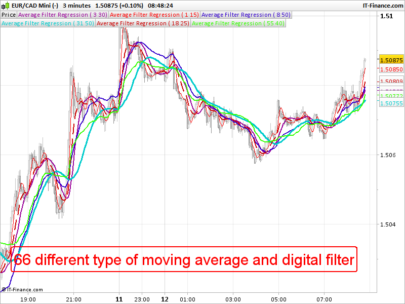What is arc method of elasticity of demand?
Contents
Using the midpoint as the denominator, we get the same elasticity of whether prices go up or down. Furthermore, arc elasticity overcomes the weakness in point elasticity. When you calculate the elasticity at two different points using the point elasticity, you will likely result in different numbers. In the figure, MN is a linear demand curve and P is the mid-point of the curve.
The price elasticity of demand is measured by its coefficient . This coefficient measures the percentage change in the quantity of a commodity demanded resulting from https://1investing.in/ a given percentage change in its price. Further, we use arc elasticity to determine price elasticity over some part of the demand curve, instead of a single point.
What is point elasticity and arc elasticity explain?
Here, price rises, and overall spending or outlays shift in the opposite direction. The three quantifiable determinants of demand for which its elasticity is measured are the price of the commodity, the price of related goods, and the income of the consumer. Therefore the three types of Elasticity of Demand are Price Elasticity of Demand, Cross Elasticity of Demand, and Income Elasticity of Demand. This method should be used when there is a very small change in price and quantity demanded. Elasticity refers to the degree of responsiveness in supply or demand in relation to changes in price.

If percentages are known, the numerical value of elasticity can be calculated. The coefficient of elasticity of demand is a pure number i.e. it stands by itself, being independent of units of measurement. The coefficient of price elasticity of demand can be calculated with the help of the following formula. The transit authority will certainly want to know whether a price increase will cause its total revenue to rise or fall. In fact, determining the impact of a price change on total revenue is crucial to the analysis of many problems in economics. On a linear demand curve, the price elasticity of demand varies depending on the interval over which we are measuring it.
What is price elasticity of demand?
This method is also known as ‘Flux Method’ or ‘Proportionate Method’ or ‘Mathematical Method’. Cross elasticity is used to classify the relationship between goods. If cross elasticity is greater than zero, an increase in the price of y causes an increase in the quantity demanded of x, and the two products are said to be substitutes. When the cross- elasticity is greater than zero, the goods or services involved are classified as complements Increases in the price of y reduces the quantity demanded of that product. Bread and butter, cars and tires, and computers and computer programs are examples of pairs of goods that are complements. In Figure-11, the area between the points R and T on the demand curve forms an arc, therefore, the price elasticity of demand estimated between these two points is known as arc elasticity of demand.
- The area of rectangle OB is less than the area of rectangle OA.
- Under the total outlay method, price elasticity of demand is measured by observing the direction of change in total expenditure in response to a change in price.
- With a downward-sloping demand curve, price and quantity demanded move in opposite directions, so the price elasticity of demand is always negative.
- In the diagram, the demand curve DD shows unitary elastic demand under the total outlay method.
If the price of a new washing machine goes up, you’re likely to forgo that immediate purchase and wait until prices go down or the current machine breaks down. Not surprisingly, this concept is of great interest to marketing professionals. It becomes increasingly less accurate when movement is towards the arc’s end. In order to measure Ed at any particular point, lower portion of the curve from that point is divided by the upper portion of the curve from the same point. Involves the determination of elasticity at any point on a straight line.
What makes a product inelastic?
In the case of the non-linear demand curve, the use of the arc method is more suitable. We have to keep in our mind that the arc elasticity measure takes into account the midpoint of the chord that connects the two points on the demand curve. Economist John C. B. Cooper estimated short- and long-run price elasticities of demand for crude oil for 23 industrialized nations for the period 1971–2000. Professor Cooper found that for virtually every country, the price elasticities were negative, and the long-run price elasticities were generally much greater than were the short-run price elasticities. His results are reported in Table 5.1 “Short- and Long-Run Price Elasticities of the Demand for Crude Oil in 23 Countries”.
However, one of the issues of using this method is that the percentage change depends on the base or the starting point. Should we charge the initial price or quantity as the starting point is a considerable matter? The degree of price elasticity of demand for different goods is different. So, it is important to measure the elasticity of demand to compare the elasticity of demand for different goods.
Arc Elasticity of Demand:
Here, commodity prices and overall spending are going in the same direction. Calculate the Price Elasticity of Demand if the demand for Good X increases from 5 units to 7 units due to fall in price from Rs. 10 to Rs. 6. In this way, value of Ep is one which means that price elasticity of demand is unitary. Similarly, if it is more than one, price elasticity of demand is greater than one and if it is less than one, price elasticity of demand is less than unity.
- Whereas Point Elasticity is the elasticity at a finite point on the curve.
- A movement from B to A is a $0.10 increase in price, which reduces quantity demanded by 20,000 rides per day.
- An inelastic demand or supply curve is one that induces a smaller percentage change in the quantity requested or supplied by a given percentage change in price.
In finer terms, with the help of the arc method, we can compute elasticity over a range of prices. Geometric measurement of price elasticity is possible through a method called the point elasticity method. It measures the demand at any point of the curve when the demand curve is linear.
How is the elasticity of a graph measured?
The movement from point B to point C shows unitary elastic demand as total expenditure has remained unchanged with the change in price. Similarly, the movement from point C to point D shows inelastic demand as total expenditure as well as price has decreased. When total expenditure decreases with fall in price and increases with rise in price, the value of PED will be less than 1.
FAQs on Measurement of Price Elasticity
Given the demand curve shown in Figure 5.2 “Price Elasticities of Demand for a Linear Demand Curve”, we see that at a price of $0.80, the transit authority will sell 40,000 rides per day. If the price were lowered by $0.10 to $0.70, quantity demanded would increase to 60,000 appraisal ratio rides and total revenue would increase to $42,000 ($0.70 times 60,000). However, if the initial price had been $0.30 and the transit authority reduced it by $0.10 to $0.20, total revenue would decrease from $42,000 ($0.30 times 140,000) to $32,000 ($0.20 times 160,000).



